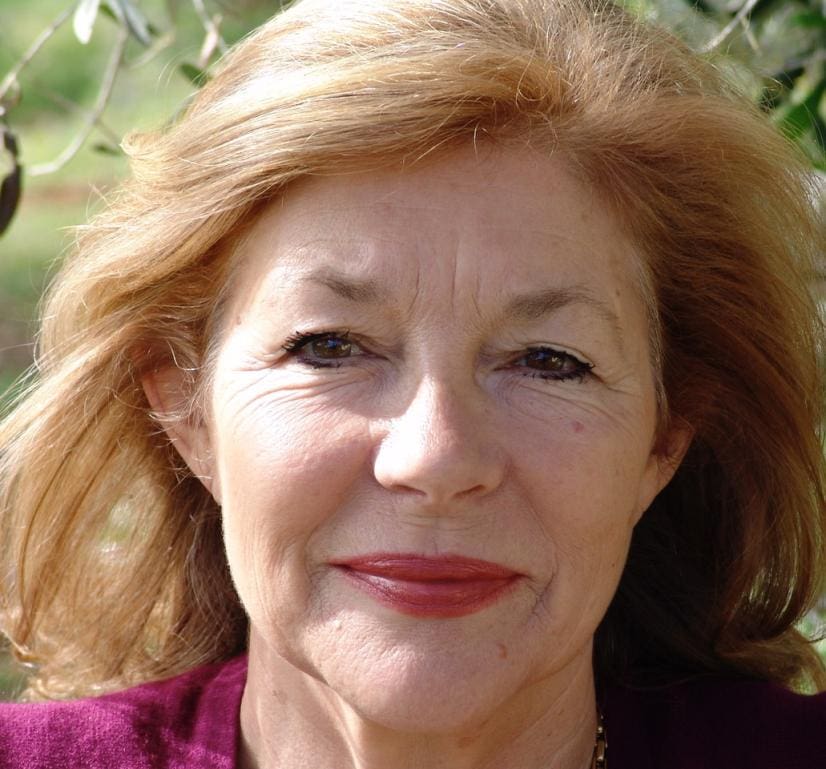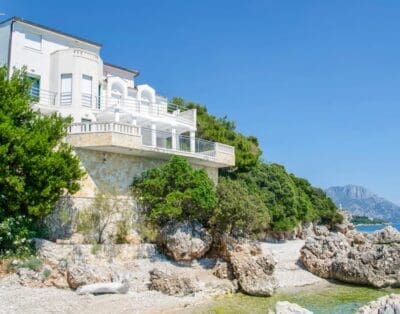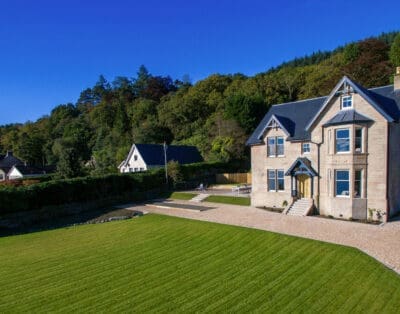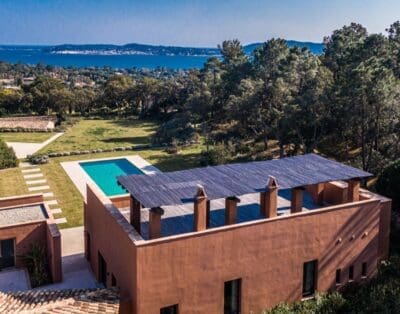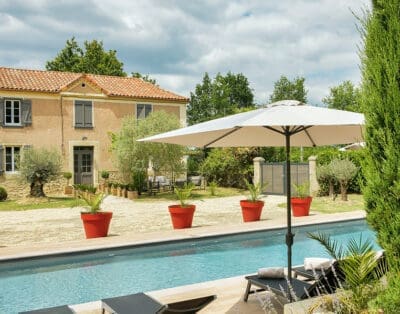IX INTERVIEWS AUTHOR, ACTRESS AND STAR OF – CAROL DRINKWATER’S SECRET PROVENCE
Carol Drinkwater has a deep passion and knowledge of Provence, having made it her home for more than 30 years. On a hillside above the bay of Cannes, she and her husband Michel live on an olive farm producing delicious olive oil and other organic fruits. The recent series – A Year in Provence with Carol Drinkwater – aired on Channel 5, inviting viewers into Carol’s slice of Provençal heaven. The cameras followed her across the region to share her local secrets and broad insight into the places and people that, as she states ‘are the beating heart’ of the area, and which has inspired her writing. Her journey through Provence touches on the glamour of the Riviera, but searches beyond the coastline to find locally sourced food, crafts and culture along the way, intimately entwined with her life back on the Olive farm.
In making this travel series – A Year in Provence with Carol Drinkwater – what were your highlights and what did you uncover and rediscover? For me when we first started to talk about the series and how we would form it, because at that stage it had no shape at all, one of the things I wanted to be able to reveal and share with the viewers was the real Provence or the inner Provence you might say, rather than the flashy skin that exists on the coast, which of course for television, they wanted a little bit of, with a visit to some of the more glamorous hotels along the French Riviera. But what I wanted to show was the beating heart of Provence, the people that work and live there, that earn their living there and also who are affected by what happens with tourism. Plus other changes and decisions being made that might not necessarily be in their favour, in spite of the fact that it is actually their land. That was really one of my main criteria I think in the beginning.
‘A year in Provence’ was a clever way to showcase the people, landscape, products and cultural heritage of the region, but all connected through your Olive Farm as the focal point, did you even realise how inter-connected the stories at ‘Appassionata Villa’ were with the wider region? Yes, because when I started to write the Olive Farm Series of books, although firstly telling our love story between Michel (Carol’s husband) and I, it was also my love story with ‘Provence’ and the ‘Olive Tree’. I see it as a love story that exists on many levels and in fact, it reaches right across the Mediterranean in terms of my books – The Olive Route & The Olive Tree. So, I began with that really, to tell the story of a person, an area, a house and the sea, which had opened me up and absolutely changed me; fundamentally changed me and my entire direction in life and from there all the cultural and landscape aspects all became entwined branches of the same tree.
Keeping in mind tourists visiting Cannes and the Riviera, what would comprise your perfect day when the sun is shining, which is often in the Cote D’Azur? My perfect day then in Cannes, if away from our Villa, would start very early in the morning say 6am by driving down the hill to the coast to one of the public beaches. I would start with a refreshing morning swim, before anyone gets there, swimming out into the water as the sun begins to hit the horizon and settles beautifully on the water from the east. I would then go to have coffee and croissant at the old harbour in Cannes and watch the merchants, shopkeepers and people begin to unload and prepare themselves for the day ahead. Then I would go into the local market and get some fresh vegetables, local cheeses; the fishmongers’ wives would usually be about by then and I would source a nice piece of fish to take back to the farm and grill on the BBQ. Then maybe I’d take a boat over to the Isle des Lérins, (set of Islands opposite the bay of Cannes) and take a stroll there. There is a new ‘Underwater Museum’ in between the Islands, which features in the series; (A Year in Provence with Carol Drinkwater) which I agreed to dive to and see six sculptures of fractured human faces, a permanent art installation by British sculptor Jason de Caires Taylor. If you have children with you, this would be an amazing activity to take them snorkelling there. Or continue by boat (access via separate boats) to Saint-Honorat and Sainte-Marguerite Islands and walk around at leisure, take a swim and have lunch on the beach, which are all simple, affordable and pleasurable things that anyone can do. You can also visit the ‘Man in Iron Mask Cell’ where he was imprisoned on Sainte Marguerite for 11-years. During the summer it is a place where students can go to study about marine history and science. Later in the day, I would return to Cannes and venture to the Matisse Museum in Nice and return via the Picasso Museum in Antibes set within the Grimaldi Castle where Picasso had a studio. Finally, I would end my day with dinner up at our Olive Farm or a fish restaurant down on the water.
Did you know the Cote D’Azur Riviera Tourist Card includes several of the places and activities in the series, as part of their offering, was this an intentional editorial decision alongside the Nice-Cote D’Azur Tourism Office? No, I picked things that I thought would be accessible and enjoyable for tourists, and to take them to some extent, one leaf further inland, but I had not realised they were included on the ‘Riviera Pass’, although I am aware of the pass. That certainly was not an artistic decision, so I cannot take credit for that.
N.B. The French Riviera Pass is the City Card provided by the Nice Côte d’Azur Metropolitan Convention & Visitors Bureau. It is intended to help travellers’ discover the main tourist sights and activities in Nice and on the French Riviera free of charge, which means huge savings on your holiday budget. Further information go to French Riviera Pass
Will there be another series of ‘A Year in Provence’ or are there any other travel oriented escapades in the pipeline? Well, they have approached my agent about a second series, but it is very early days, so it really depends on many things and the availability of many different people. It will be lots of good luck if we can push it altogether; if not I have several other ideas which I have promoted to my agent, one of which is together with a well-known actress who is a friend of mine, so potentially do something with her, plus several other ideas. I am never short of ideas, because it’s a region I know so well and so passionate about sharing with people. I am also particularly interested in sharing my knowledge of the Mediterranean in the broader sense, which is one of my great loves – The Olive Tree and the Mediterranean – and that tapestry of cultures and diversity that goes with it. So maybe we can see how we formulate that.
You travelled around the Mediterranean, writing, filming and discovering the ancient secrets of the olive tree, including travelling to the country of my birth – Lebanon – what were your highlights? The ‘Bechealeh’ olive groves in Lebanon, this little village up in the mountains has these two tiny olive groves; when I say tiny I mean that each grove has no more than 14 trees between them. These have been radio-carbon dated at between 6-7,000 years old, so for me that was not just a highlight of being in Lebanon, but one of the highlights of my life to have made that journey, which almost makes my life worthwhile. To stand inside those olive trees, which as you will know, the trunk opens like a cobra’s neck and large enough to engulf you and several others, is a very humbling experience. You ask yourself who planted them and to understand that this was before there was an alphabet. As I wrote in my book ‘The Olive Route’, even if a young couple kissed beneath those young trees, they couldn’t carve their names in letters, not as we know it, because they did not have an alphabet. So, when you start to think what that actually means, how long ago that was and that the tree was still a very important part of their living culture, their food culture and later their medicinal needs, you begin to see the power and the sagacity, sagesse of these trees. Especially, in terms of what they have seen and what they have withstood, such as wars and everything, its quite extraordinary.
The olive tree, certainly feels part of my life, but it seems to have become a guiding light in your life and the many opportunities it has created, from published books, travel experiences and of course an integral part of A Year in Provence, do you agree? Yes, it certainly did! That’s indeed what ‘The Olive Route’ forms; sadly we did not get to Lebanon for the TV series. I have made a series of five documentary films collectively titled The Olive Route. They are nothing to do with the Ch. 5 TV series. Produced out of Paris for ARTE and other European channels. DVDs available through me. It was for this series of five films that I went back around the Mediterranean. I had been there for the books but we did not shoot in Lebanon and several other southern Mediterranean countries due to the Arab Spring uprisings which broke out while we were on location. The TV Company said it was too risky to go in, even though I have been in much riskier situations on my own and still yearn to complete the other five films. I absolutely love Lebanon, I think Beirut is such a beautiful city and a very tragic city of course. I also love that whole coastline and I always say to people that in another life I was a ‘Phoenician!’.
You were invited to work with UNESCO to help found an Olive Heritage Trail around the Mediterranean, what exactly is the Olive Heritage Trail? Unfortunately, it was abandoned because certain countries could not agree (on its formation), so ultimately it did not get the UNESCO classification envisioned. The idea was that I would pin-point places around the Mediterranean and one could try and create the ‘Olive Route’ as it were, and mark the spots where, for example, the Greeks from Asia-minor from ‘Phocaea’ (now Foca, in modern Turkey) went on to found ‘Massalia’ which today is ‘Marseille’. Those are vital fence posts around the Mediterranean that changed in a way, the whole shift of the Mediterranean and the peoples, cultures and languages that were living there; so UNESCO wanted me to bring that knowledge to the table, which I did do and I worked with them for quite a long time. In fact UNESCO were very much behind the film series (The Olive Route) and certainly supported it by putting their name to it.
Have you ever considered offering homestead style stays on the Olive farm, because the notion of luxury has morphed towards authentic, artisanal, sustainable experiences? We have a little cottage that we previously rented out, but now requires refurbishment and after that we will look at where we go with it. We also have a ruin on our land, which we are thinking of building up, maybe to create environmentally-friendly stays in an authentic and rustic sense, because environmental issues and preservation is my thing. We certainly have not formulated it, but we may look to go more in that direction. When the little cottage was available to my readers and friends, we would invite them up to share a drink at the villa and I would take them for a walk around the farm and talk about the olive trees and things like that, so people have asked to come and do the harvest with us; these are the directions I would consider.
For visitor information go to the Office de Tourisme Métropolitain Nice Côte d’Azur
For all your testing requirements ExpressTest by Cignpost

